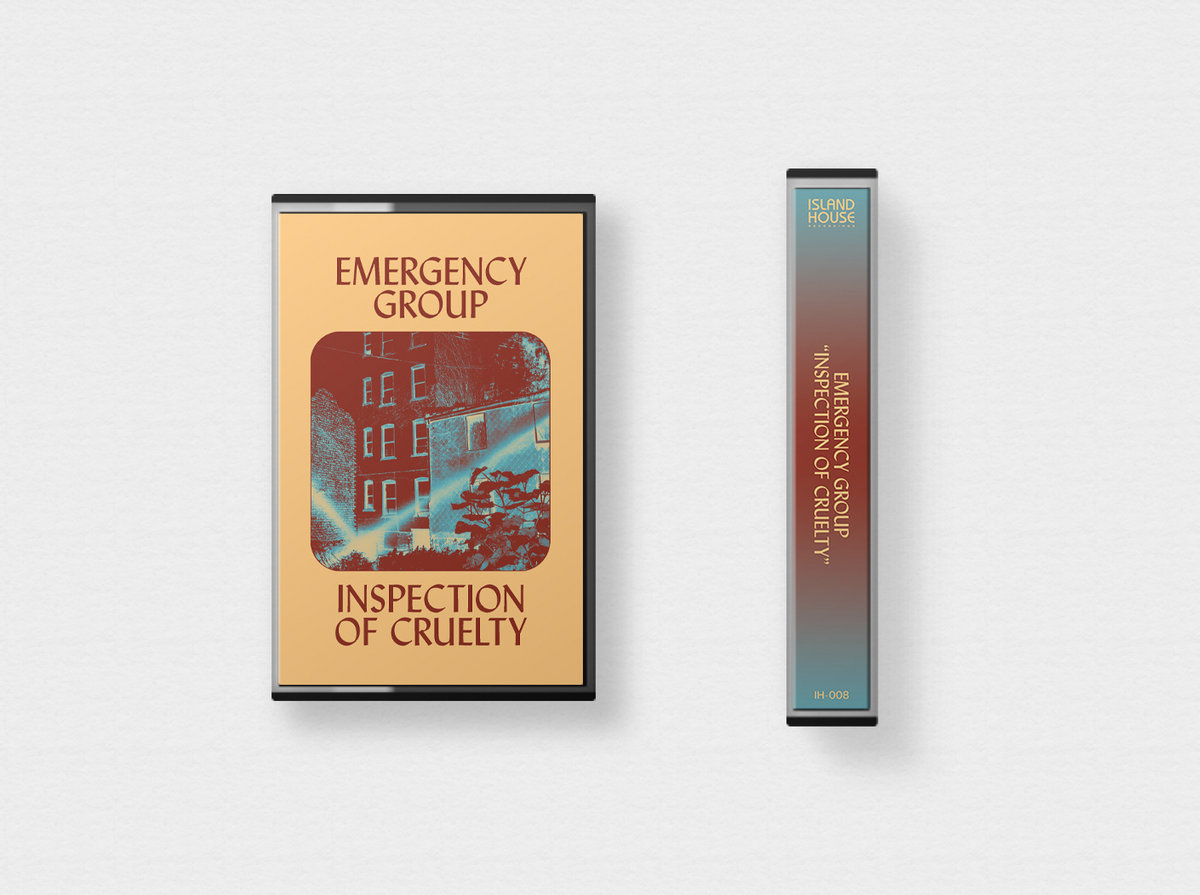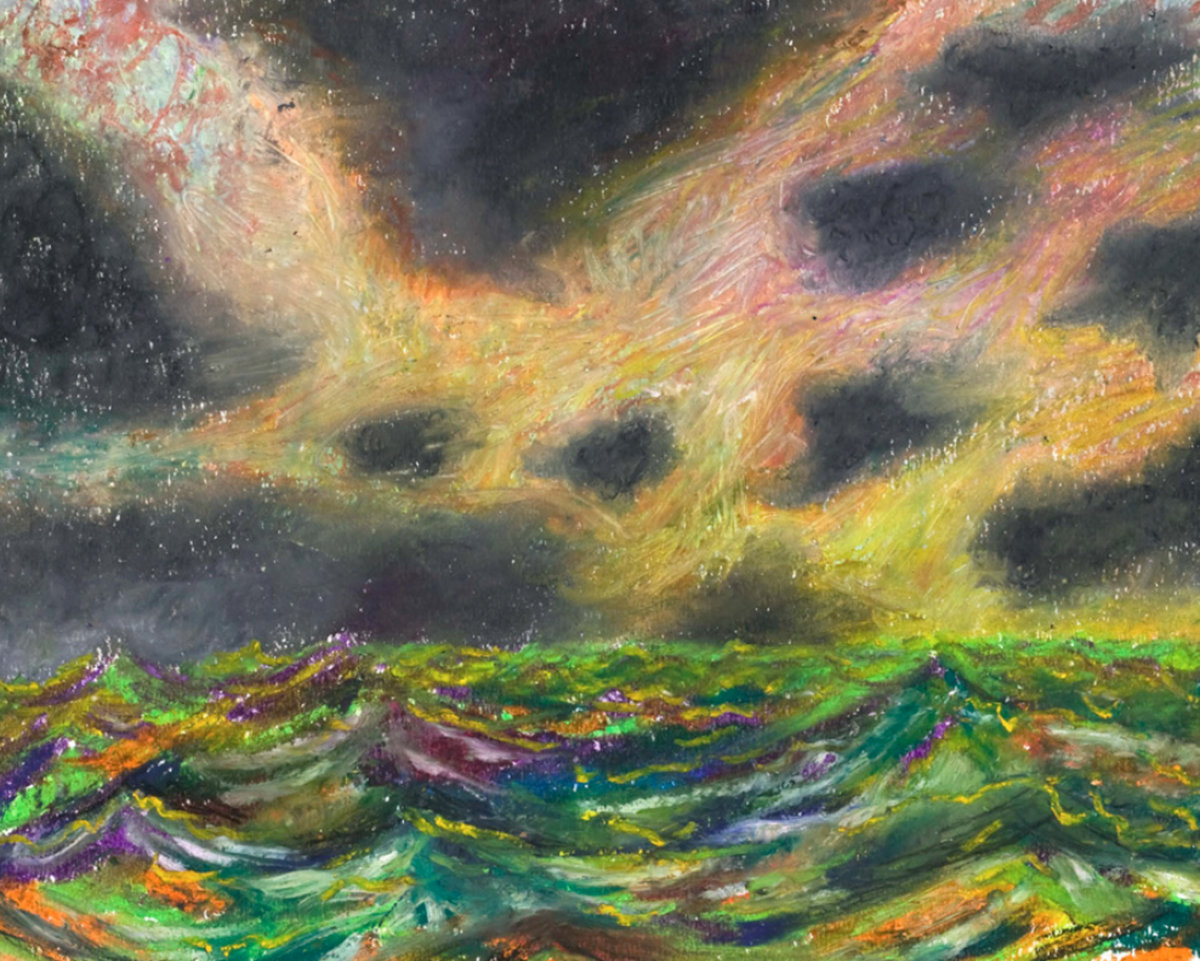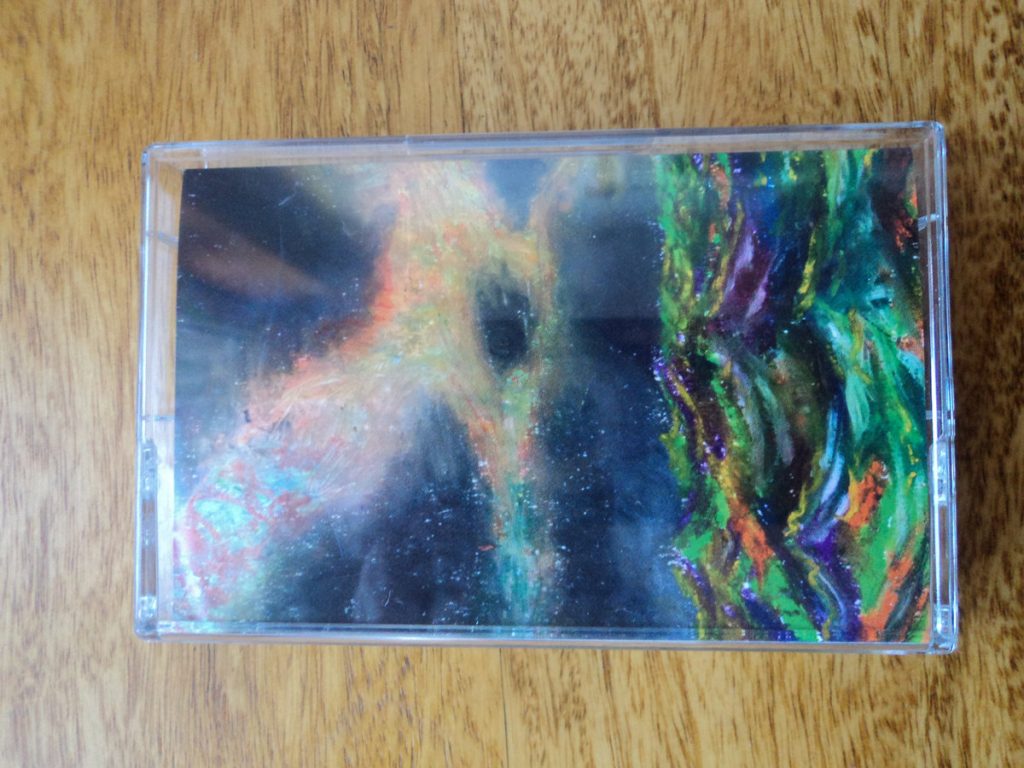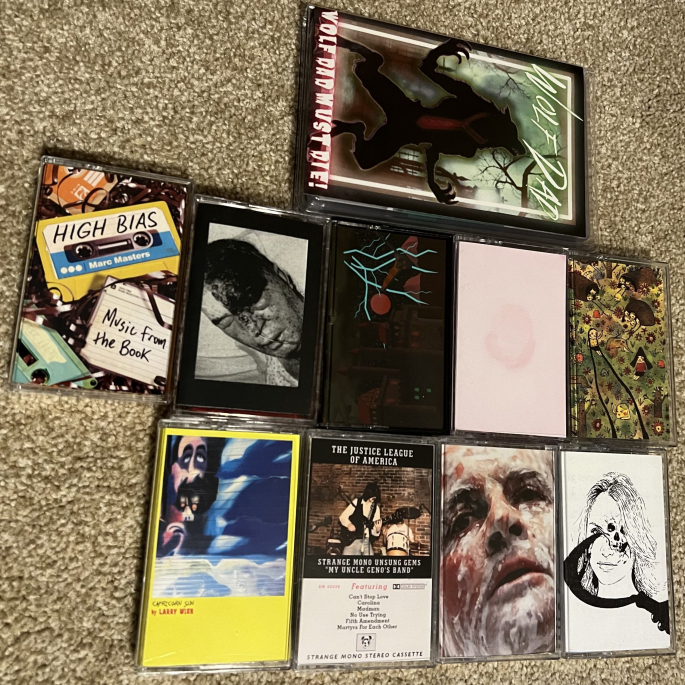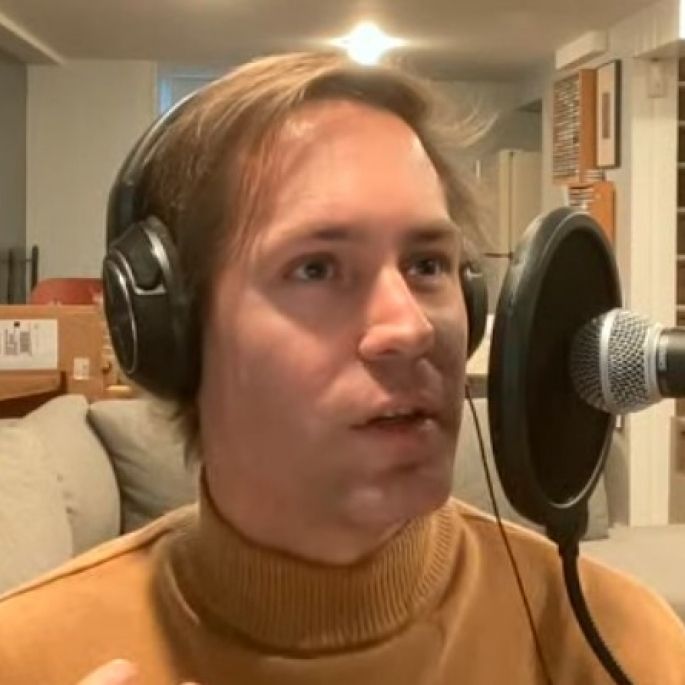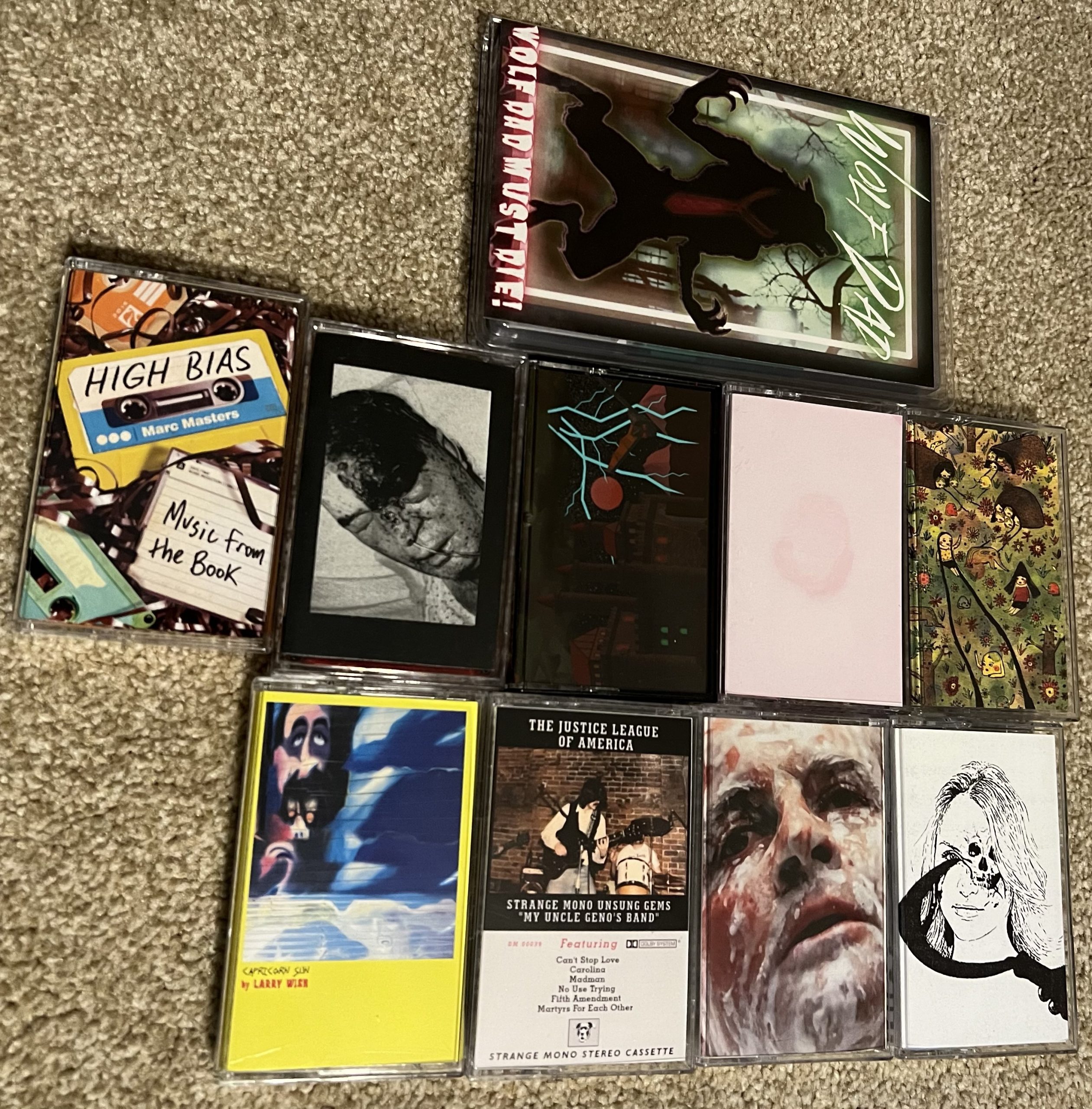Emergency Group – Inspection of Cruelty
11.16.2023 by Ryan Masteller
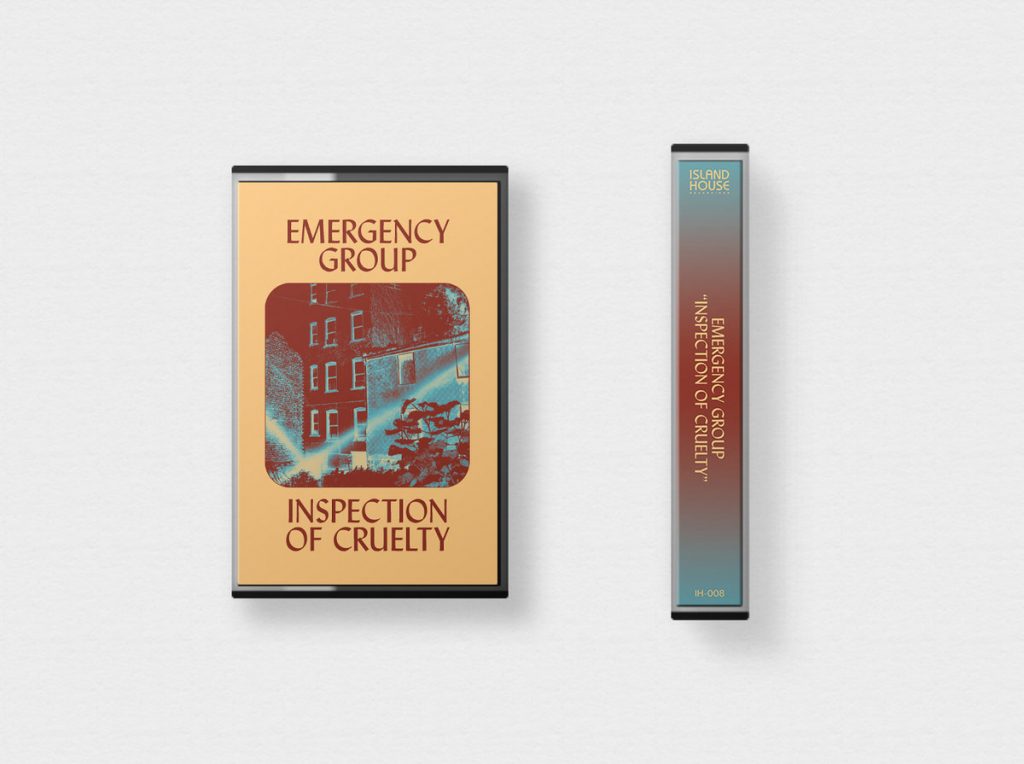
I honestly came into this one blind – I had no idea what I was getting into with “Emergency Group” or “Inspection of Cruelty,” no sense of where the Play button could possibly take me. Were they a moonlighting band of EMT professionals? Were they gumshoes on the lookout for human rights violations? Were they masked vigilantes? None of these questions would be answered for me, but Inspection of Cruelty, on the New York label Island House (whose enviable catalog also includes releases from Joseph Allred, Seawind of Battery, and rootless, meaning I have to pay attention to another tape imprint now), answered probably the most important one: Is this thing going to be awesome or what?
Most certainly.
Two sides, two halves of a forty-five minute composition called “Inspection of Cruelty,” and the first thing outta my brain as I immediately jammed out was, “Oh my gosh, this sounds like it’s coming right out of Miles Davis’s fusion period.” There’s definitely a Corea/McLaughlin vibe all over the place, and while there’s not horn to be found on this thing (does that mean it’s even jazz??), the guitar, keys, and bass melodically interlock and play off each other in such profound ways that it doesn’t matter. So I got hooked immediately, drawn in – gotta do some research now, or else I’m going to be woefully underprepared if end up writing about it. (We’ll see if this actually posts.) Good news on that front: the Bandcamp (RIP) description pretty much says, “Miles Davis fusion period,” “Chick Corea,” “no horns.” I’m either psychic, incredibly intuitive, or good at spoiling myself.
Don’t be an idiot when choosing which one of those to believe.
One thing I did learn is that the band’s name is a riff on the Tony Williams Lifetime’s Emergency! album, which featured Davis players Tony Williams, John McLaughlin, and Larry Young, so really the circle is fully complete. The Emergency Group allows this amazing history to seep into their playing, while perfecting their own brand of psychedelic jazz-rock. The quartet – Robert Boston on keys, Andreas Brade on drums, Jonathan Byerley on guitar, and Dave Mandl on bass – reaches out telepathically to connect on far-out vibrations, somehow warping in and out of nebulae in one moment and hooking into cryo-stasis tubes in others, always in perfect sync, always up for exploration, always of one mind. But the playing is also intensely grounded – it’s one thing to drift off into space metaphors and quite another to appreciate the astounding musicianship on display. It’s almost like we don’t expect this anymore, as if it’s of a time long past, a movement no longer worth getting angry about.
But you’d be dead wrong about that. The time is always now.
Inspection of Cruelty blazes new paths in your mind, leaving fiery trails in its wake. It’s a massive live-take dopamine rush that is endlessly relistenable – that’s why it’s on tape, so it can auto-flip and play constantly to soundtrack your entire day. Sadly the edition of 75 tapes is sold out from the source, but you can still set digital files on repeat, right? Also, and I don’t think this is hyperbole, but I have an inkling this thing’s going to place high on the Tabs Out Top 200 Tapes list, the most important year-end list you can peruse. Check back in December.

